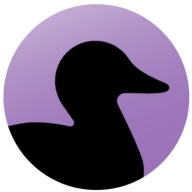

OpenText Core Application Security and Coverity are competitors in the application security domain. OpenText seems to have the upper hand in flexibility with scalable pricing options, appealing to budget-conscious users, while Coverity excels in handling a broad range of coding languages, albeit at higher costs.
Features: OpenText Core Application Security offers a fast turn-around cloud-based solution, ideal for budget-conscious users. It can integrate easily into development processes, providing accurate results tailored to specific applications. Notable features include SAST, DAST, centralized management, and real-time collaboration via a client portal. Coverity provides detailed static analysis for identifying security vulnerabilities effectively and supports integrations like CI/CD pipelines, making it essential for organizations seeking thorough security with a focus on deeper analysis and lower false positives.
Room for Improvement: OpenText Core Application Security could improve by enhancing its packaging and reporting capabilities, providing better integration with incident management, and reducing false positives. Coverity might benefit from enhanced pricing transparency, a lower false positives rate, more flexible licensing based on lines of code rather than user count, and improved integration with GitFlow and popular IDEs.
Ease of Deployment and Customer Service: OpenText Core Application Security offers versatile deployment options across cloud and hybrid environments and receives high praise for its customer service and technical support, which is described as timely and helpful. In contrast, Coverity focuses heavily on on-premises setups, with its support seen as competent but slow to respond, needing improvements in communication and technical knowledge.
Pricing and ROI: OpenText Core Application Security provides flexible pricing models, although it is generally considered expensive. Its ROI is demonstrated through reduced bug densities and security risks. Coverity is often viewed as having a high cost, with users suggesting a pricing model better aligned with code volume rather than user count. Despite its high cost, the investment is justified by security enhancements and product quality.


Coverity gives you the speed, ease of use, accuracy, industry standards compliance, and scalability that you need to develop high-quality, secure applications. Coverity identifies critical software quality defects and security vulnerabilities in code as it’s written, early in the development process, when it’s least costly and easiest to fix. With the Code Sight integrated development environment (IDE) plugin, developers get accurate analysis in seconds in their IDE as they code. Precise actionable remediation advice and context-specific eLearning help your developers understand how to fix their prioritized issues quickly, without having to become security experts.
Coverity seamlessly integrates automated security testing into your CI/CD pipelines and supports your existing development tools and workflows. Choose where and how to do your development: on-premises or in the cloud with the Polaris Software Integrity Platform (SaaS), a highly scalable, cloud-based application security platform. Coverity supports more than 20 languages and 200 frameworks and templates.
OpenText Core Application Security offers robust features like static and dynamic scanning, real-time vulnerability tracking, and seamless integration with development platforms, designed to enhance code security and reduce operational costs.
OpenText Core Application Security is a cloud-based, on-demand service providing accurate and deep scanning capabilities with detailed reporting. Its integrations with development platforms ensure an enhanced security layer in the development lifecycle, benefiting users by lowering operational costs and facilitating efficient remediation. The platform addresses needs for intuitive interfaces, API support, and comprehensive vulnerability assessments, helping improve code security and accelerate time-to-market. Despite its strengths, challenges exist around false positives, report clarity, and language support, alongside confusing pricing and package options. Enhancements are sought in areas like CI/CD pipeline configuration, report visualization, scan times, and integration with third-party tools such as GitLab, container scanning, and software composition analysis.
What features define OpenText Core Application Security?Industries like mobile applications, e-commerce, and banking leverage OpenText Core Application Security for its ability to identify vulnerabilities such as SQL injections. Integrating seamlessly with DevSecOps and security auditing processes, this tool supports developers in writing safer code, ensuring secure application deployment and enhancing software assurance.
We monitor all Static Application Security Testing (SAST) reviews to prevent fraudulent reviews and keep review quality high. We do not post reviews by company employees or direct competitors. We validate each review for authenticity via cross-reference with LinkedIn, and personal follow-up with the reviewer when necessary.